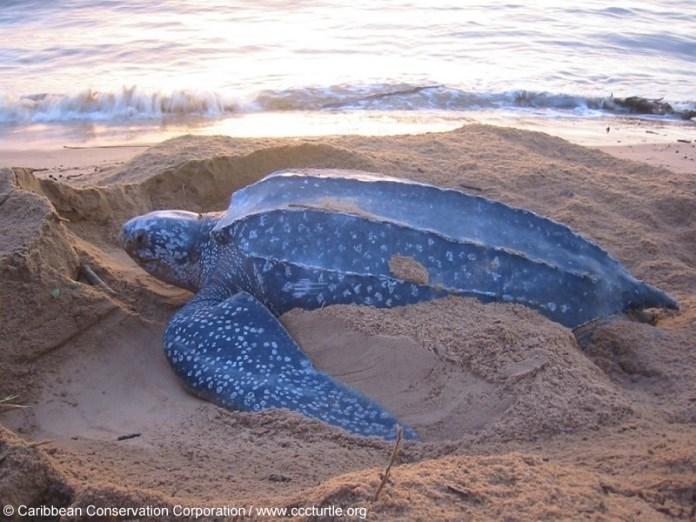
4 minute read
Book Review
The Windward Road by Archie Carr
By Francesca Battaglia
As man continues to vie for his spot at the top of the scala naturae, the other inhabitants of Earth struggle to keep up with the changes man leaves in his wake. Pollution, deforestation, sealevel rise, and global warming, among other changes, threaten to decimate entire species. Only in recent decades has the magnitude of just how important conservation really is hit the scientists, politicians, and the general public. From the smallest plankton to the largest whale, marine species are certainly not exempt to the wide array of anthropogenic-induced environmental effects. The plight of the sea turtle, perhaps analogous to that of the American bison, serves as one of the best paragons for an overexploited species in need of an intervention. Nearly all endangered, these ancient reptiles attracted the attention of American ecologist and pioneering conservationist, Archie Carr. A professor of zoology at the University of Florida, Dr. Carr studied sea turtles in the Gulf of Maine and the Caribbean extensively for the purpose of shedding light on the world’s declining sea turtle populations. His discoveries, as well as the difficulties he encountered while trying to understand the elusive reptiles, are recounted in his novel, in The Windward Road (1956). The genius of the novel is that although it certainly qualifies as scientific writing, the account is sprinkled with colorful stories through which shines Carr’s humor and personality. The result is an adherence to the principles of scientific writing (“… in the best tradition of the great naturalist explorers,” said Rachel Carson), laced with romance and adventure. The preface of the novel is an invitation to the Caribbean. Carr guides his reader around the remote islands, wielding surrogate senses: eyes to see the iridescence of the hawksbill carapaces in the surf, ears to hear the cry of the terns, nose to smell the fish stew wafting up from the native bungalows, skin to feel the warm trade winds as it tosses your hair. Once you are hooked, Carr delves into his adventures. The inquisitive herpetologist visits the Caribbean to gather information about all the sea turtles that frequent the area: green, loggerhead, hawksbill, ridley, and leatherback. To accomplish this, he interacts with the locals whenever possible, knowing quite well that they are the true experts. Thus he enlists the help of fisherman to procure specimens, pilots to aid him with aerial surveys, and common, everyday people to teach him how to pinpoint and dig up turtle nests. Carr’s excitement while detailing his observations and upon discovering new information is utterly contagious. Unlike the one-track mind that most people associate with researchers on a mission, Carr proves that a good naturalist’s eyes and ears are always open, never wasting an opportunity to contemplate the mysteries of the natural world. For instance, an entire chapter, entitled “The Lively Petes of Parque Vargas” is dedicated to the nine Gray’s three-toed sloths that caught his attention while he waited for his plane. In another chapter, he details the barrage of a shoal of anchovies by hungry jacks, terns, and pelicans.

Carr leaves his reader with the greatest impression in his final chapter, The Passing of the Fleet. It is in this short chapter that Carr makes his appeal to save the sea turtles. He describes a time when the islands were not entirely settled, and turtles came by the hundreds, maybe thousands, to breed and lay their eggs on the “honey-colored sand”. It wasn’t long until the settlers grew to value the turtles for their meat, skin, eggs, and shells. As Carr states, “All early activity in the New World tropics – exploration, colonization, buccaneering, and even the maneuverings of naval squadrons – was in some way or degree dependent on the turtle.” The turtles, particularly the green turtle, were easy to catch, held many uses, and made themselves readily available in huge quantities every summer. Thus they began to take as many as their holds and decks could carry because after all, the turtle fleets were infinite. Or so they thought. Today the green turtle population in the Atlantic is a mere fraction of what it used to be due to the overexploitation of the past and the ongoing destruction of habitat. Carr admits that too little is known about the turtles to know exactly what to do to help the populations recuperate. However, he does leave his readers with hope for saving the turtles from extinction by protecting the beaches that are critical for the turtles’ to complete their life cycles. In concordance with Carr’s call-to-arms in The Windward Road, steps towards the conservation of sea turtles were taken in Florida and the Caribbean. A very manageable read, only 252 pages long, it is worth acquainting oneself with the man and the story that played such a pivotal role in the movement towards sea turtle conservation.

Archie Carr on Tortugera, Costa Rica.
Source: The Windward Road (1956) by Archie Carr









